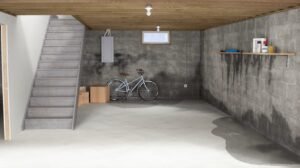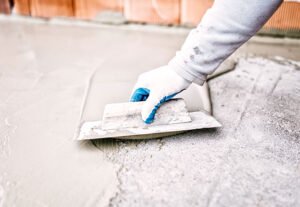Welcome to a comprehensive guide on equipment room waterproofing, where functionality meets protection with precision.
Equipment rooms house critical machinery and electrical components, making them vulnerable to water damage.
Proper waterproofing is essential to safeguard equipment and ensure uninterrupted operation. 0
In this enlightening blog, we’ll explore the intricacies of equipment room waterproofing, offering expert insights and practical tips to fortify these vital spaces against moisture intrusion.
Join us as we embark on a journey to elevate your equipment room waterproofing efforts to new heights of durability and reliability, with PaintMyWalls leading the way in professional excellence.
Table of Contents
ToggleSteps to be taken care for Equipment Room Waterproofing
1. Understanding the Challenge:
Equipment rooms, being critical hubs for machinery and electrical components, face significant challenges when it comes to waterproofing.
Their location, often below ground level or adjacent to plumbing fixtures, makes them susceptible to moisture infiltration.
Factors such as hydrostatic pressure, groundwater seepage, and poor drainage exacerbate the risk of water damage.
Understanding these challenges is essential for devising effective waterproofing strategies tailored to the unique conditions of each equipment room.
2. Surface Preparation:
Surface preparation is paramount in ensuring the success of any waterproofing project.
Before applying waterproofing materials, thorough cleaning and preparation of the equipment room surfaces are necessary.
This involves removing dirt, grease, and other contaminants that could compromise adhesion.
Additionally, repairing any cracks, voids, or imperfections in the concrete substrate is crucial to creating a smooth and uniform surface for waterproofing applications.
3. Selecting the Right Waterproofing Products:
Choosing the appropriate waterproofing products is critical for achieving long-lasting protection against water intrusion.
Liquid-applied membranes, elastomeric coatings, and polyurethane sealants are commonly used in equipment room waterproofing due to their durability and flexibility.
It’s essential to select products that are specifically designed for the intended application and compatible with the substrate and environmental conditions.
4. Waterproofing Application Techniques:
The proper application of waterproofing materials is essential for ensuring their effectiveness.
Depending on the type of product chosen, application techniques may vary. Liquid-applied membranes require careful attention to detail to achieve uniform coverage and seamless integration with the substrate.
Brush, roller, or spray methods may be employed, depending on the product and surface area.
Professional applicators follow manufacturer guidelines meticulously to ensure optimal adhesion and performance.
5. Addressing Penetrations and Joints:
Penetrations, such as pipes, conduits, and cables, as well as joints and seams in the equipment room structure, represent potential pathways for water infiltration.
Specialized waterproofing materials, such as caulks, sealants, or prefabricated membranes, are used to seal these areas effectively.
Attention to detail is critical to ensure that all penetrations and joints are properly sealed to prevent water ingress.
6. Incorporating Drainage Systems:
Effective drainage is essential for managing water runoff and preventing moisture buildup within the equipment room.
Floor drains, trench drains, or sump pumps may be installed to facilitate the removal of excess water.
Proper slope and positioning of drainage systems ensure that water is directed away from the equipment room and discharged safely outside the building.
Regular maintenance of drains is necessary to prevent clogging and ensure proper functionality.
7. Protecting Electrical Components:
Electrical components within the equipment room are particularly vulnerable to water damage.
Waterproof enclosures or cabinets should be used to house sensitive equipment and electrical panels, providing an additional layer of protection against moisture ingress.
Cable penetrations and junction boxes must be adequately sealed to prevent water intrusion and minimize the risk of electrical hazards.
8. Monitoring and Maintenance:
Regular monitoring and maintenance are essential for preserving the integrity of the waterproofing system and detecting any signs of deterioration or damage.
Scheduled inspections, moisture testing, and visual assessments help identify potential issues early on, allowing for timely repairs and proactive maintenance.
By staying vigilant and addressing issues promptly, equipment room waterproofing can remain effective and reliable over time.
9. Professional Expertise:
For optimal results, it’s advisable to enlist the services of experienced professionals with specialized expertise in waterproofing solutions.
Certified waterproofing contractors, such as those employed by PaintMyWalls, possess the knowledge, skills, and resources necessary to execute equipment room waterproofing projects to the highest standards.
By entrusting your waterproofing needs to professionals, you can have confidence in the durability, reliability, and longevity of your equipment room protection.
Conclusion:
As you embark on the journey of equipment room waterproofing, prioritize professionalism, precision, and proactive maintenance.
With PaintMyWalls as your dedicated partner, you can trust in our commitment to excellence and our unwavering focus on protecting your valuable assets.
Contact PaintMyWalls today to elevate your equipment room waterproofing endeavors to unmatched levels of durability, reliability, and peace of mind.
Read More: Advantages of Sheet Membranes Waterproofing



